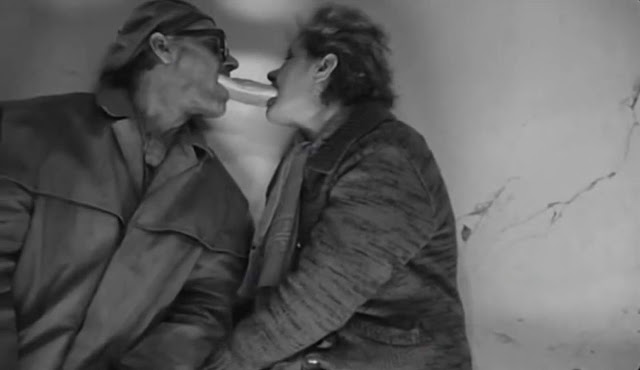angora
"The crowd on the platform looked sombre in the twilight. A slender grey figure emerged from it and moved quickly towards the train, pulling his gloves off. His face, with its large-cornered kalpak, had become indistinct and colourless in the dusk... The door of our compartment opened suddenly, and Mustafa Kemal´s hand reached up to help me down the step (...)
´Welcome, Hanum Effendi", he said in a low voice.
This was Angora. This, she thought to herself, was to be the Kaaba - the Mecca - of the Nationalist Movement.
Angora at this time was little more than a pair of twin hills, rising like nipples from the bosom of the Anatolian plateau. Crowning one of them were the half-ruined walls of a citadel which had seen and survived notable Turkish conflicts. Clambering up to it and around it and within it was a human warren of mud-brick houses and ruins of houses, huddled lattice to lattice and roof above roof amid dunghills and winding precipitous lanes. Rough with stones and, at this season when rain was frequent, awash with mud, they provided a hard climb for the horses and the ramshackle carriages which, apart from the long peasant bullock-carts with their spokeless wailing wheels, were Angora´s only means of transport. (...)
Angora was in fact hardly more than a large village, its population reduced to a mere 20,000 by a disastrous fire which had wiped out a section of it during the war, leaving blackened remains which still scarred the lower slopes of the hillside. The citadel looked out to all points of the compass over the naked treeless plain, snowbound in winter, sun-baked in summer, waterless but for the rainfall and a few scattered wells.
From a distance a low ridge of undulating hills, rough and colourless, half-embraced the site. And ´site´ it still was. The city - still to become a city - had begun to spill itself down on the plateau, but had yet to spread far across it, obstructed largely by a stretch of waste-land which in the winter became a marsh. Here stood the railway station and a few public buildings which the Young Turks, remedying Ottoman neglect, had erected. Here was also a small and unkept municipal garden.
This ´Mecca of the Nationalist Movement´ had little to offer in terms of distinction, far less of amenity. But there was, in its immeasurable skies and its clean translucent air, in the asceticism of its landscape and the contrasting softness of the violet and amber lights which bathed and transfigured it at dawn and again at dusk, a rarefied atmosphere which set it apart from other places. Even its inhabitants were a people apart, with their own individual brand of strong silent cussedness and earthy self-respect; with moreover an outlandish pronunciation of Turkish, which the men from Constantinople did not easily understand."
Patrick Kinross, "Ataturk"
´Welcome, Hanum Effendi", he said in a low voice.
This was Angora. This, she thought to herself, was to be the Kaaba - the Mecca - of the Nationalist Movement.
Angora at this time was little more than a pair of twin hills, rising like nipples from the bosom of the Anatolian plateau. Crowning one of them were the half-ruined walls of a citadel which had seen and survived notable Turkish conflicts. Clambering up to it and around it and within it was a human warren of mud-brick houses and ruins of houses, huddled lattice to lattice and roof above roof amid dunghills and winding precipitous lanes. Rough with stones and, at this season when rain was frequent, awash with mud, they provided a hard climb for the horses and the ramshackle carriages which, apart from the long peasant bullock-carts with their spokeless wailing wheels, were Angora´s only means of transport. (...)
Angora was in fact hardly more than a large village, its population reduced to a mere 20,000 by a disastrous fire which had wiped out a section of it during the war, leaving blackened remains which still scarred the lower slopes of the hillside. The citadel looked out to all points of the compass over the naked treeless plain, snowbound in winter, sun-baked in summer, waterless but for the rainfall and a few scattered wells.
From a distance a low ridge of undulating hills, rough and colourless, half-embraced the site. And ´site´ it still was. The city - still to become a city - had begun to spill itself down on the plateau, but had yet to spread far across it, obstructed largely by a stretch of waste-land which in the winter became a marsh. Here stood the railway station and a few public buildings which the Young Turks, remedying Ottoman neglect, had erected. Here was also a small and unkept municipal garden.
This ´Mecca of the Nationalist Movement´ had little to offer in terms of distinction, far less of amenity. But there was, in its immeasurable skies and its clean translucent air, in the asceticism of its landscape and the contrasting softness of the violet and amber lights which bathed and transfigured it at dawn and again at dusk, a rarefied atmosphere which set it apart from other places. Even its inhabitants were a people apart, with their own individual brand of strong silent cussedness and earthy self-respect; with moreover an outlandish pronunciation of Turkish, which the men from Constantinople did not easily understand."
Patrick Kinross, "Ataturk"


Comentários
Postar um comentário